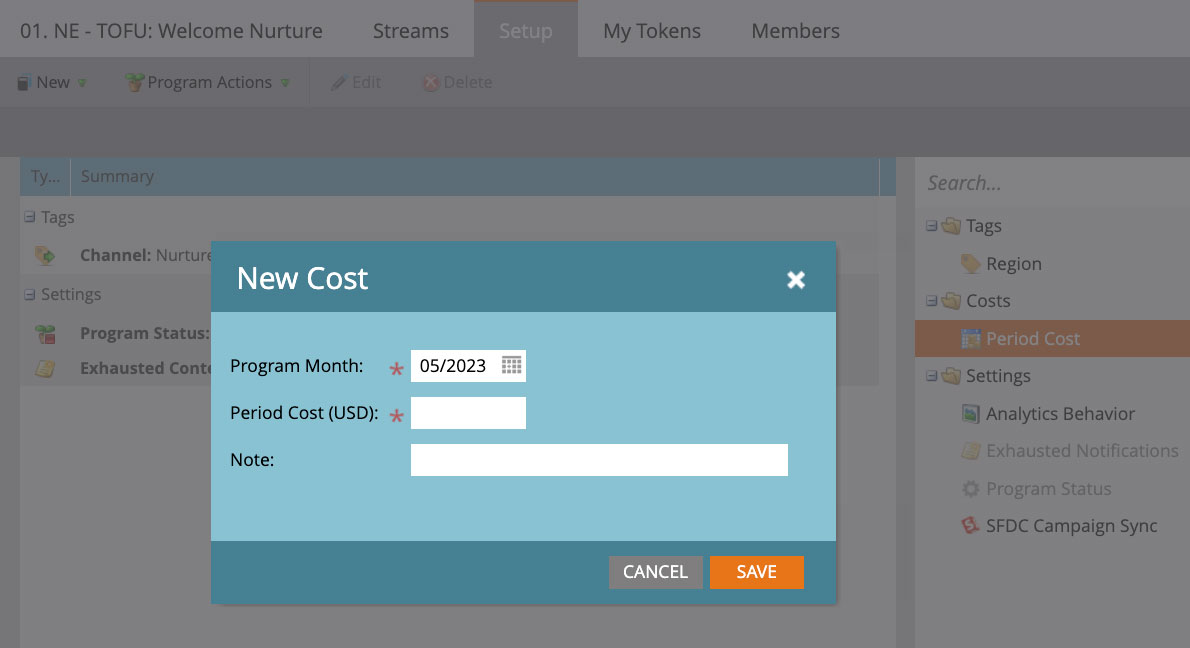An important function of marketing operations is monitoring campaign costs because sadly, money does not grow on trees or bushes or even underground for that matter.
Optimizing your marketing spends allows you to improve your return on investment (ROI) by turning off or restructuring under-performing campaigns, diverting funds towards more profitable campaigns or even experimenting with new campaign ideas.
What are campaign costs?
Campaign costs can simply be defined as the amount of money needed to run your company’s marketing campaigns. For the purposes of this blog, we are only going to look at the money necessary to directly stand up these campaigns and not include the headcount that is also needed to run these campaigns. Think the venue and catering budget for a happy hour, but not the salary of the events manager.
Tracking and analyzing your campaign costs
Before you optimize your campaign costs, you need to be tracking your campaign costs:
- In Marketo Enage, you can use period costs to track the cost of a program and then use Revenue Cycle Analytics to run further reporting.
- If you sync to Salesforce Campaigns, you can also use fields within the campaigns object to track spend.
- A spreadsheet can also be a good option if you’re collating campaign costs across multiple systems.

Then, you need to define your ROI. This will most likely need some input from leadership but ultimately, you need a benchmark such as MQLs, improved lead velocity, etc. to determine whether your campaign costs are worth it and creating the results they need to.
Now, you can begin analyzing your spending. Look for spend that doesn’t generate the ROI that it should and then start brainstorming ways to rethink that campaign.
Optimizing your Spend
Once you have identified which campaigns are under-performing, here are some ideas on how to optimize them:
- If your webinars are under-performing, see if your webinar provider is the right tool for you. Switching to a new webinar provider may help reduce costs and improve audience engagement.
- If your online ads are under-performing, see if there are ways to retarget the ads to better improve conversion or simply reduce that spend until a stronger strategy can be devised.
- If certain content pieces are underperforming, see if the content needs a refresh to resonate with audiences.
- If legacy campaigns are underperforming, don’t be afraid to scrap them and start over. After all, the market changes quickly and so should your campaigns.
In conclusion, optimizing your campaign costs is an ongoing process that can be tedious at times but can also reap huge dividends in terms of cost savings and vastly improved ROI.







